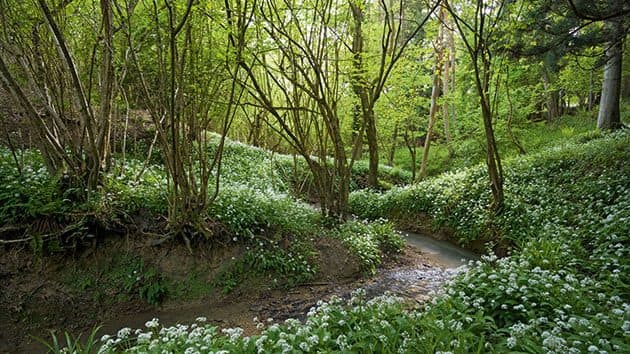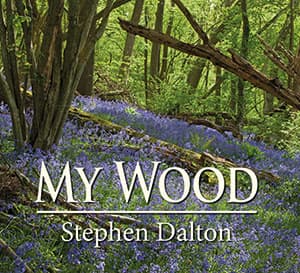Images of insects in mid-flight are fairly commonplace now, but it was only in the early 1970s that British photographer Stephen Dalton became the first person to succeed in capturing them, using high-speed imaging techniques he developed himself.
His groundbreaking work has graced the pages of Amateur Photographer on many occasions.
Now, after a nine-year hiatus, he has published his 15th book, My Wood, so naturally we wanted to talk to him about it.
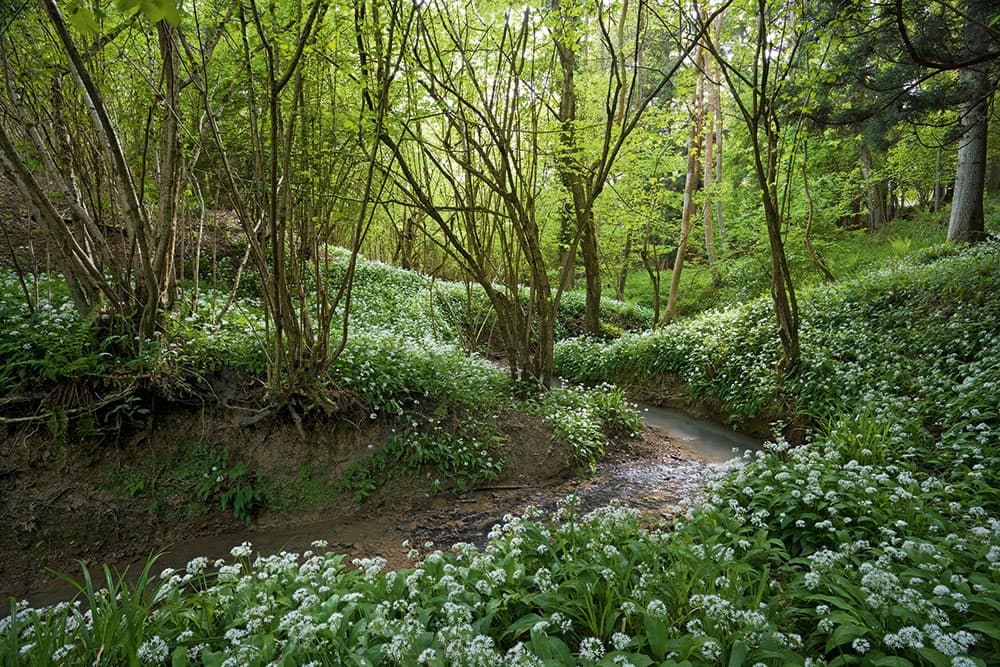
Stream with wild garlic. During spring, the brook at the bottom of the wood is transformed into a sea of green and white, and the aroma of garlic fills the air. Canon EOS-1Ds Mark II, 17-40mm. Credit: Stephen Dalton
Deep Sussex
The first challenge in interviewing Stephen is finding his house. After a series of roads that get successively narrower, steeper and bumpier as they meander through a dense woodland canopy, I finally arrive at his idyllic Victorian farm cottage, in what can truly be described as deepest Sussex. From the rear are stunning views of the Sussex Weald, including the wood that is the subject of his book.
“We own up to the second hedge, and the woods in that direction,” Stephen says. “We bought the house in 1976 and it came with half an acre, which we landscaped to create the garden. When the neighbouring farm came up for sale in 1988 and developers took an interest in it, we got together with our neighbours and managed to buy it. I turned one of the outbuildings into my studio, and we rented out the fields to the local dairy farmer for grazing.”
Ten years later, the adjoining nine acres of woodland came up for auction, and Stephen and his wife managed to acquire it. Although overgrown, it was clear that with good management it could be turned into a small nature reserve. Over the years, selective felling and coppicing thinned out the canopy and allowed more light to reach the forest floor, which has encouraged the ground flora to flourish.
A boggy section of the wood was dug out to create a pond. The barbed-wire fences have been replaced with hedgerows, creating wildlife corridors. When the bottom fell out of the dairy industry and the farmer gave it up, part of the farm was left to go completely wild, and 97 species of wild flower now grow there. The result is a fantastic outdoor nature studio, right on Stephen’s doorstep.
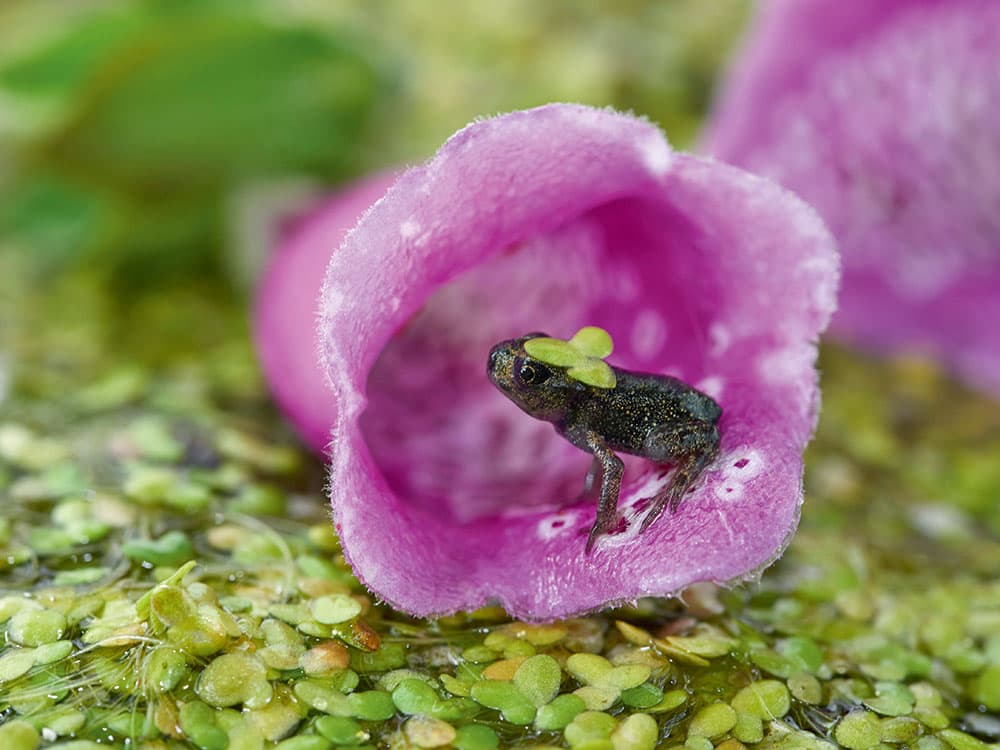
Toadlet resting on a floating foxglove flower. By midsummer the mass of tadpoles has hatched and the path around the pond is alive with frogs and toads, making it almost impossible to walk without treading on them. This one has clambered onto one of the many foxglove petals floating on the water. Panasonic Lumix DMC-GH4, 60mm f/2.8. Credit: Stephen Dalton
Beauty and solitude
“It’s a very special part of Sussex.” he says, with obvious affection. “Well, they don’t make land any more, do they? So much of it today has been destroyed by developers, but this is an Area of Outstanding Natural Beauty. I can walk all day and not see another human being.”
Earlier this year, a publisher heard about the wood and asked Stephen to do a book on it. “They said, ‘Can you write it in two months?’ I’ve been photographing in the wood ever since we’ve had it, mostly for my own pleasure, but I’m not a quick writer, or a quick photographer… in fact, I’m not quick at doing anything. But I did it, and here we are.”
The resulting book is a 154-page illustrated love letter not just to Rookery Wood, but to the English woodland and its wild inhabitants throughout the four seasons.
“I tried to capture the whole feeling of the wood,” he explains, “from the fungi, small plants and insects, right up to the large mammals. Woodlands are enchanting, spiritual places, cool in the summer, warm in the winter, and they contain more wildlife than any other land habitat.”
Many nature photographers have a background in the biological sciences, but Stephen’s fieldcraft is self taught. “I’ve always loved birds and creepy crawlies since I was knee high to a grasshopper,” he says. “I love animals in general. My father was very keen on birds. But because of my high-speed work, I’ve come to be more associated with insects.”
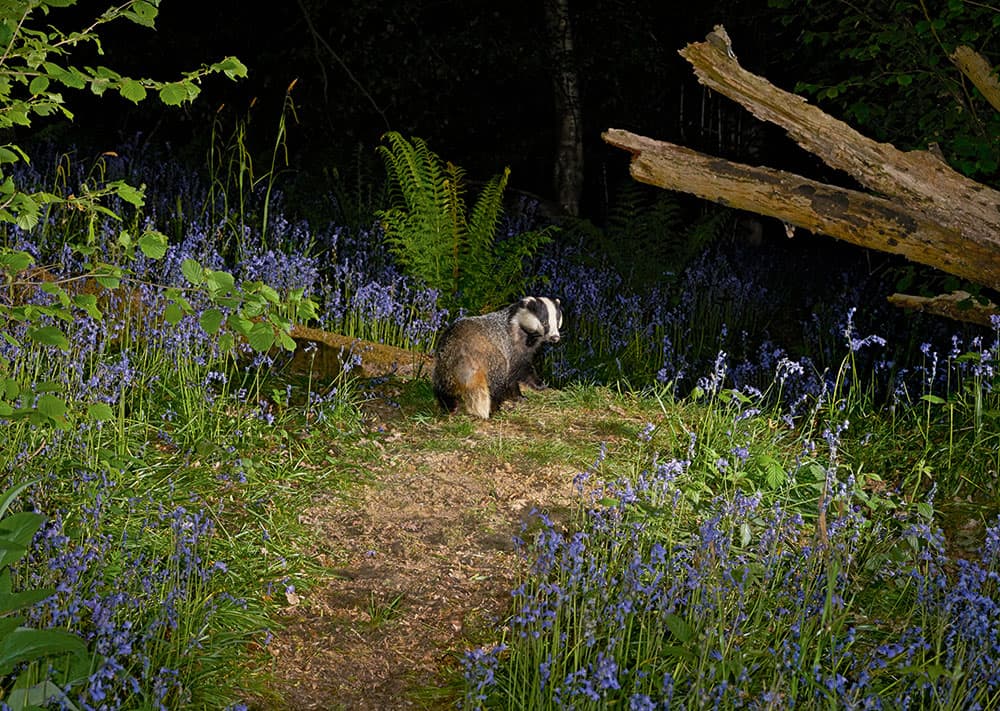
Badger and bluebells. This is the most recent image in the book and was taken especially for it. Badgers have always roamed the wood at night, except when Stephen wanted to photograph one – then they disappeared. Fortunately, they resumed their visits just days before the publisher’s deadline! Sony Alpha 7R II, Zeiss 55mm f/1.8. Credit: Stephen Dalton
Flying insects
Stephen, who studied photography at London’s Regent Street Polytechnic in the 1960s, spent two years working on perfecting his technique for photographing flying insects. “I’d been photographing them for a few years and then it occurred to me that they had never been photographed in flight before,” he explains.
“Off-the-shelf kits for high-speed photography didn’t exist at the time, so we had to invent it. I had to isolate all the problems and solve them one at a time. The first was how to detect a very small thing, moving fast, in space. The answer was a series of infrared beams and mirrors. I used to use about three, though nowadays I tend to use only one.
“The biggest problem was shutter delay. SLR shutters took about 1/10sec to open. Even Hasselblads, which were considered fast, took about 1/20sec. Well, an insect can y a metre or two in that time, so I had to design and make a special high-speed shutter release. It was very crude, clamped on the front using elastic bands, but it worked. Now I have a new one that is much faster – the delay is about 1/1000sec, as opposed to 1/300sec. ‘Another problem was that my ash wasn’t anything like fast enough. I borrowed something that supposedly was, but it wasn’t, so I worked with a friend, Ron Perkins, and we built our own high-speed ash capable of 1/30,000sec.”
My Wood by Stephen Dalton is available for £14.99 from bookshops or directly from the publisher Merlin Unwin Books, at www.merlinunwin.co.uk.
Remarkably, Stephen still uses that same high-speed ash kit today, and has no plans to change it any time soon. In his studio he points to one of his DIY flash heads. “It’s made out of a pudding basin and Tupperware,” he says. “The best thing about these is that they bounce. I had one fall off a church steeple once. It bounced off a gravestone and was all right.”
Although birds and mammals are photographed in situ, Stephen’s high-speed work is done in his studio – a converted barn next to the house.
“You can’t really do these shots in the field,” he says. “It’s a long-winded process that takes about two or three days of preparation. You have to set it all up, and find the right backgrounds. I’d have to leave it out for a couple of days in the rain, and someone could come along and nick it, and you don’t have the control.”
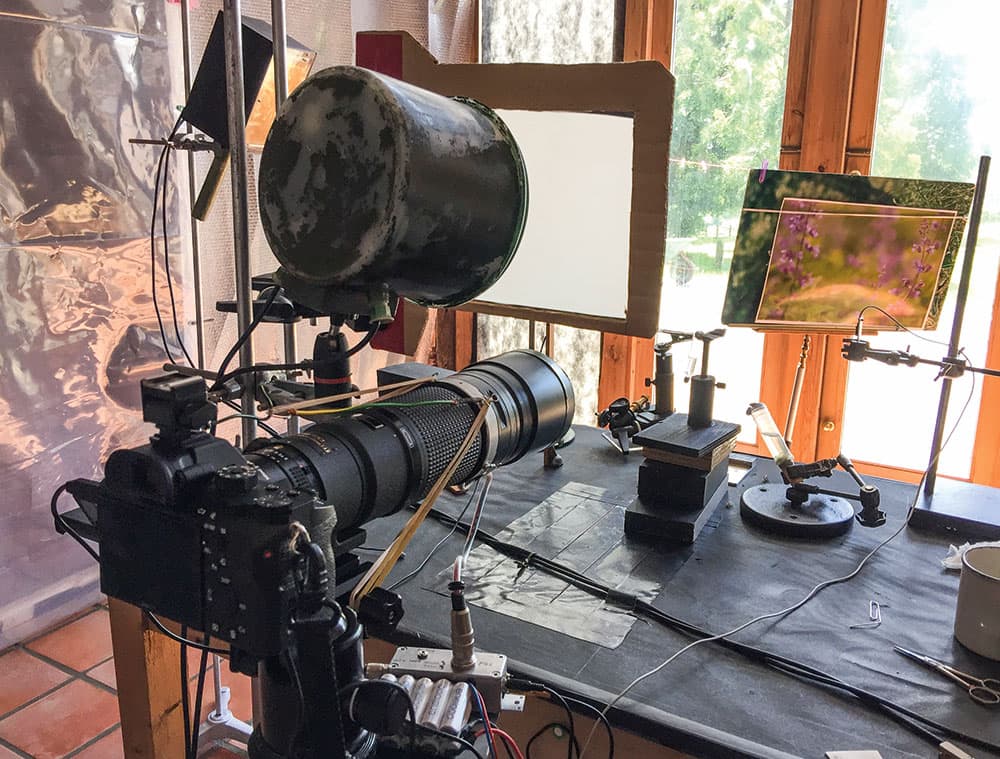
His current set-up comprises a Sony Alpha 7R II with a Nikon 200mm f/4 macro lens, to which his home-made high-speed shutter is attached using elastic bands. Above it you can see his pudding-basin ash head with diffuser, and a mounted photo taken in his wood that he uses as a background. Credit: Stephen Dalton
Switching systems
You only have to look at the detail in Stephen’s images to see that he is a perfectionist, and this has made him very demanding when it comes to equipment. He first went digital with the Canon EOS-1Ds, but since then he has constantly switched systems. “I like to use the best that’s available, and sometimes it’s hard to work out what that is,” he says.
“I went through the book and worked out that I used 19 different cameras to take the pictures,” he confesses. Does he have a favourite model? “I loved the Nikon D800 series,” he says. “It was one of the few cameras I found intuitive to use. I never found the Canons intuitive. Later I made a bold move after reaching a point when I decided I was getting too old or lazy to carry these massive great lumps around, so I went mirrorless and changed to the Sony Alpha 7R II for most of my work. It’s full frame and gives me about 42 megapixels to play with. The image quality is approaching what I used to get with the Phase One. But one of the great beauties for me is that I can attach whatever lens I like, so I can still use my very favourite lens, the Nikon 200mm macro – it’s very clunky and agricultural, but the optics are simply superb. Sony does a 90mm macro that is unbelievably good, too, but it’s too short for my purposes.
“I also possess a Panasonic Lumix DMC-GH4, which is light and so is ideal for ‘shooting from the hip’ when you’re walking around. My favourite lens is the 100-400mm lens, which is equivalent to 200- 800mm on full frame,” he reveals. “It is designed by Leica and is versatile and extremely good. The funny thing is that in the book you can’t really tell the difference between any of these cameras.”
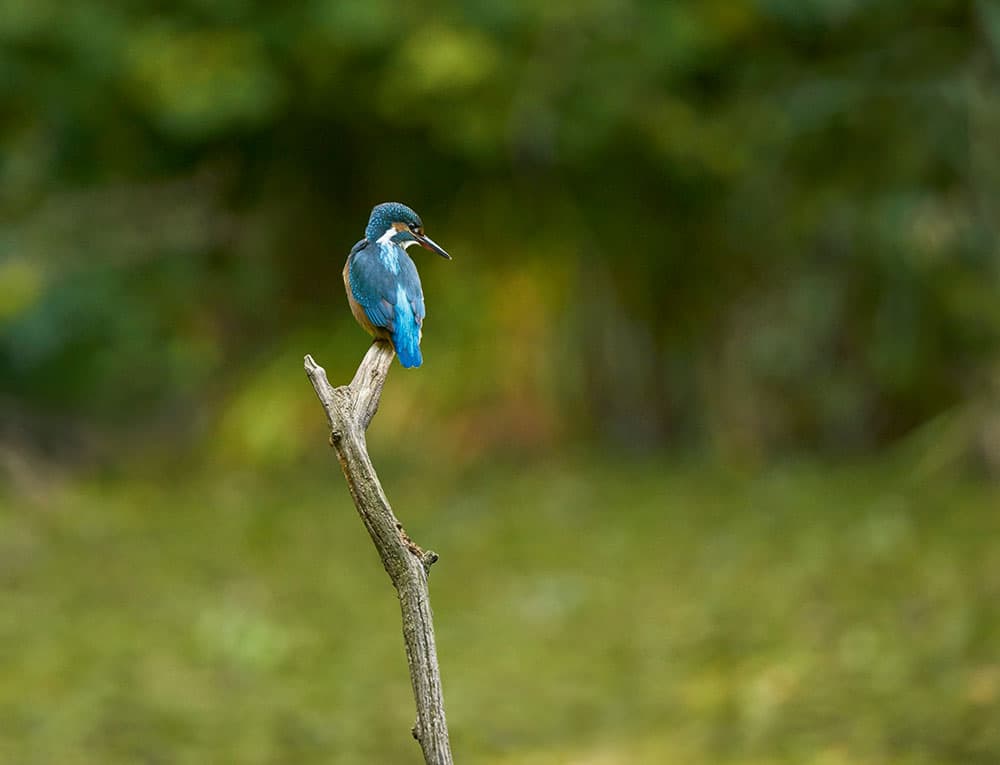
Kingfisher. These spectacular birds are a regular visitor to the pond. Stephen set an old oak branch deep into the clay pond base to create this perch, and spent many hours over several days in a natural hide made from coppiced branches. Sony Alpha 7R II, Canon 100-400mm f/4.5-5.6 G. Credit: Stephen Dalton
Best advice
For anyone hoping to succeed in nature photography today the one thing that will make the difference, according to Stephen, is subject knowledge. “If you want to be a nature photographer, the first thing you need is a love and fascination for the natural world,” he says.
“I met someone in a hide in a nature reserve recently trying to photograph a kingfisher and he had all the latest gear – £10,000 lenses and what have you – but he didn’t know anything at all about what he was photographing.”
A surprising fact about Stephen, given his association with insect photography, is that he suffers from arachnophobia. “I was bitten by a house spider when I was about three, and I’ve had a horror for spiders ever since,” he reveals, “until I did the book on spiders eight years ago, which I did partly to help overcome my fear. But even now, if we have a house spider, it’s my wife who rescues it.”
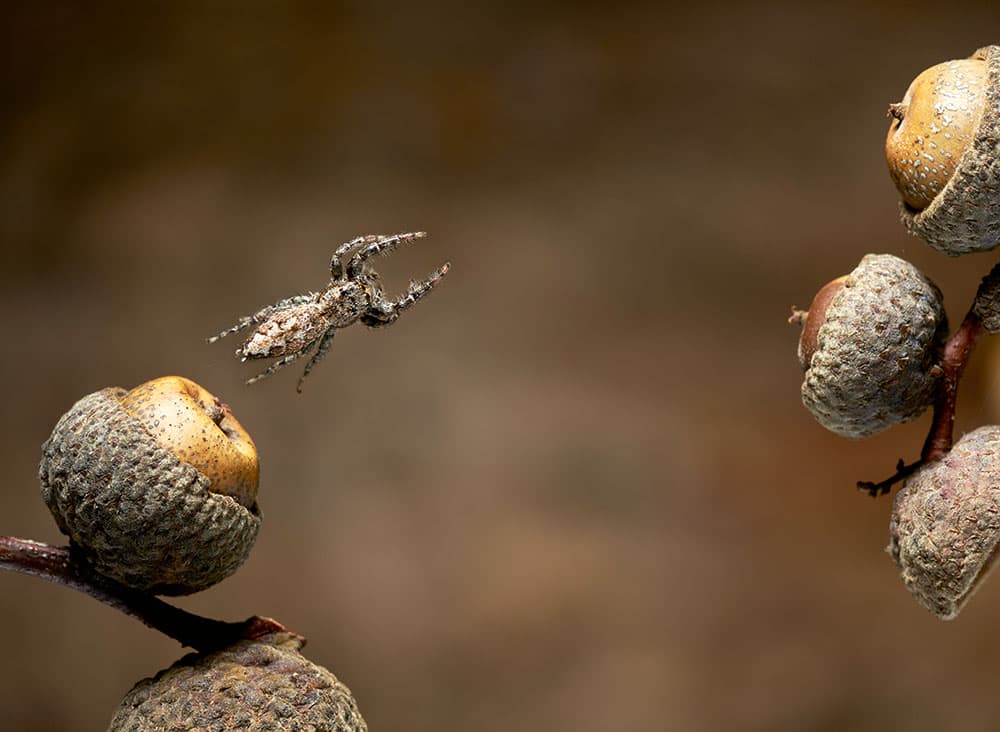 Fence spider. The fence spider is Britain’s largest jumping spider and lives in the cracks and crevices of fences, or in the bark of dying trees. This is one of Stephen’s favourite high-speed images in the book. Sony Alpha 7R II, Nikon 200mm f/4. Credit: Stephen Dalton
Fence spider. The fence spider is Britain’s largest jumping spider and lives in the cracks and crevices of fences, or in the bark of dying trees. This is one of Stephen’s favourite high-speed images in the book. Sony Alpha 7R II, Nikon 200mm f/4. Credit: Stephen Dalton
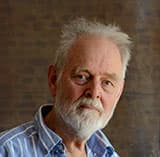 Stephen Dalton is a multi-award-winning nature photographer whose work has featured in National Geographic and Country Life magazine, and been exhibited at Tate Britain and The Barbican. An Honorary Fellow of the RPS, My Wood is his 15th book.
Stephen Dalton is a multi-award-winning nature photographer whose work has featured in National Geographic and Country Life magazine, and been exhibited at Tate Britain and The Barbican. An Honorary Fellow of the RPS, My Wood is his 15th book.

